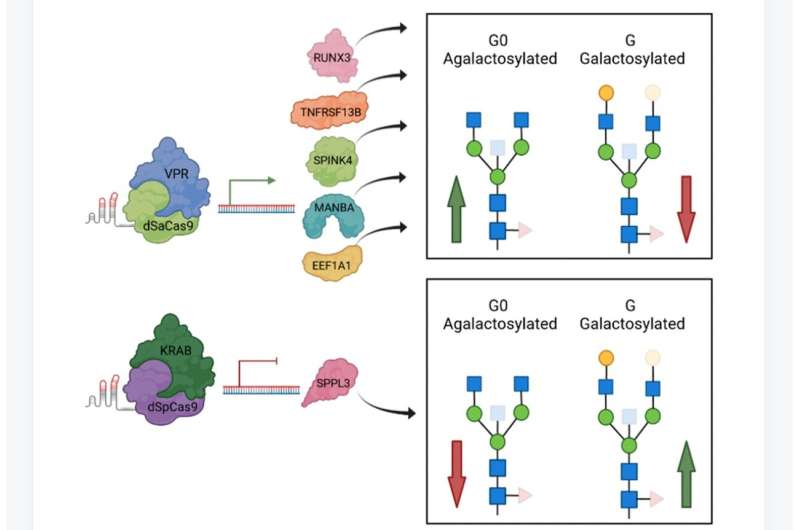This article has been reviewed according to Science X's editorial process and policies. Editors have highlighted the following attributes while ensuring the content's credibility:
fact-checked
proofread
Mapping of the gene network that regulates glycan clock of aging

A new research paper was published in Aging, titled "Mapping of the gene network that regulates glycan clock of aging."
Glycans are an essential structural component of immunoglobulin G (IgG) that modulates its structure and function. However, regulatory mechanisms behind this complex posttranslational modification are not well known.
Previous genome-wide association studies (GWAS) identified 29 genomic regions involved in regulation of IgG glycosylation, but only a few were functionally validated. One of the key functional features of IgG glycosylation is the addition of galactose (galactosylation), a trait that was shown to be associated with aging.
In this new study, researchers performed GWAS of IgG galactosylation (N=13,705) and identified 16 significantly associated loci, indicating that IgG galactosylation is regulated by a complex network of genes that extends beyond the galactosyltransferase enzyme that adds galactose to IgG glycans.
"Here, we conducted a GWAS of IgG galactosylation phenotypes in a study that almost doubles the sample size (N=13,705) compared to previous GWAS of IgG N-glycome and focused on the genes with in silico evidence for involvement in the IgG galactosylation process," the researchers write.
Gene prioritization identified 37 candidate genes. Using a recently developed CRISPR/dCas9 system, the researchers manipulated gene expression of candidate genes in the in vitro IgG expression system. Upregulation of three genes, EEF1A1, MANBA, and TNFRSF13B, changed the IgG glycome composition, which confirmed that these three genes are involved in IgG galactosylation in this in vitro expression system.
"Further research is needed to fully elucidate [the] functional mechanism behind their role in aging and to reveal the complete network of gene interactions regulating the complex process of IgG glycosylation," the researchers conclude.
More information: Azra Frkatović-Hodžić et al, Mapping of the gene network that regulates glycan clock of ageing, Aging (2023). DOI: 10.18632/aging.205106





















